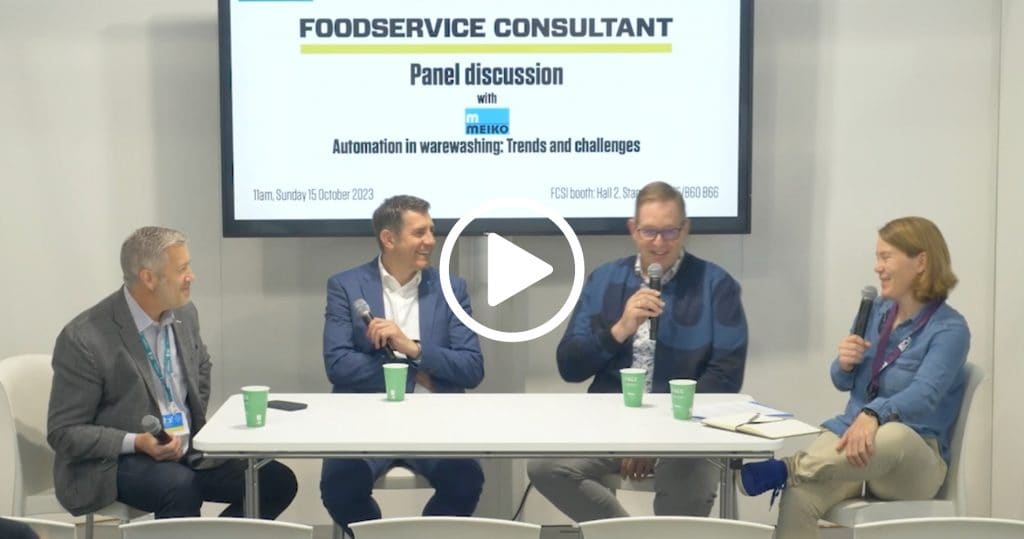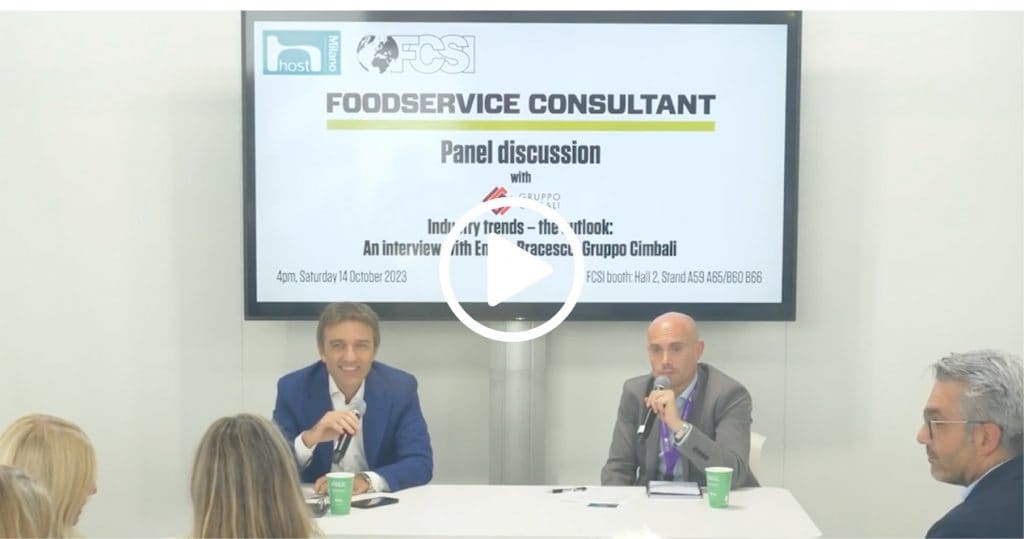
Was the humble mushroom the ingredient of 2022? As the year concludes, is the versatile fungus the product that diners and foodservice consumers will take away as the one that left its mark?
In February that was the prediction by none other than the New York Times. In the UK, commercial kitchen business Foodstars agreed. Mushrooms, the two argued, go beyond being easy to use ingredients that fit in well to the vegan, vegetarian and flexitarian diets that are so popular and widespread; and are now being developed into a much broader product range. Most recently mushroom milk has been added to the available options for dairy-free milk.
Then again, if you had asked National Geographic, this was going to be the year that tinned fish took off.
Every year, from August onwards, predictions for the following year start to emerge in the foodservice and hospitality sector, as experts, analysts and market observers take a punt at what is likely to materialize as solid trends the next year and beyond. From ingredients and flavors to technologies and equipment, there’s an opinion on just about everything.
For next year those in the know are variably predicting a growing trend around what has been labelled ‘sweet plus’ – sweet ingredients combined with other flavors such as chilli or salt. So-called ‘complex heat’ is also on the list of watchwords for 2023, described as products where heat goes beyond the spicy and incorporates other flavor notes. Others have predicted that fermentation, already a feature on trend lists, will remain an expected growth area and how about nostalgic flavors?
Depending on who you ask, the future can look different. It can at times appear a bit random and manufactured even. This peek into the future is one most have come to expect, and indeed, welcome. But, with a number of channels and platforms offering their take on the likely direction of travel, some may ask how important it is to know what the future is likely to bring and whether much of this future gazing is actually reliable.
What’s coming down the track
First things first. What is a trend? It depends on who you ask. “It is important to bear in mind that the word trend means something different to each person,” says trendologist Mike Kostyo, an associate director at Datassential, the food industry market research and trends company. “For us, a trend is simply the measurable growth, or decline, of a food, flavor, or ingredient on menus and in retail. As long as people communicate what they like and dislike to each other, both consumers and industry professionals, there will be trends.”
At Datassential, says Kostyo, the team works through four stages for a trend cycle: inception, adoption, proliferation, and ubiquity. Previously, for an ingredient or flavor to move through the cycle could take as much as 12 years, but this is reduced to six to eight years now. “Not every trend will move through the entire cycle, some will be stuck in the first stage for a long time,” says Kostyo. “They may be too expensive, hard to find or simply too ‘out there’.”
Useful tools
There is a science of sorts to this. To produce its regular menu tracker, Datassential employs a wide range of methods to keep track of trends, including a machine learning engine called Haiku, which Kostyo says can make predictions four years out. The team also tracks consumer sentiments to check in for anything that may be catching on with consumers. Combined with these is the team’s general knowledge of the food landscape.
Why does it matter? What difference does this information make on a practical level? For operators and decision-makers in the foodservice sector, future trend predictions and reports can be very useful tools even if the information doesn’t directly impact them as they work on the development of products, menus and concepts.
“Knowing that grapefruit is appearing more on menus, that more consumers have been purchasing grapefruit, that more farmers are growing grapefruit and prices are falling, that two cuisines where we see growing consumer demand also prominently feature grapefruit, that grapefruits have a key health benefit that consumers have been seeking out and so on is valuable information when making a business decision and that’s the type of information we consider when we put together our trend reports,
to use one made-up example in the case of grapefruit,” explains Kostyo.
Sources of intelligence
For foodservice consultants who start working on commercial kitchen designs several years before they open, having an idea of what to expect in the future matters, too. “It is absolutely crucial to know what is coming down the track,” says John Thomas FCSI, director of Sangster Design Group in Australia. “The larger the team and the overall running expenses, the greater the need to be able to strategically plan and allocate (as an example) expenses, investment in resources, staffing or marketing.”
Putting the reality of what a design consultant works with into perspective, he says operational layouts should have at least a 10-15-year life span, which means that having that future insight is helpful.
It’s no different for MAS consultants. “We help our clients plan for the future through strategic and master plans for their foodservices; they typically have recommendations that span three-to-10-year plans,” says FCSI Associate Sojo Alex, senior associate with US-based foodservice consultancy Envision Strategies. “Understanding foodservice trends and combining that with the client’s overall master plan and vision makes it important for us to know what is coming up. This way we can assist in business planning, revenue, demand and space projections, future foodservice site selections and potential cost estimates.”
Alex and her team collect intelligence through a variety of sources, including focus groups and surveys. “They help us understand current dining patterns and expectations while benchmarking peers provides comparison data of programs that are already in place,” she explains. “Other ways we gather information about future trends are through our educational networks, foodservice data assessment companies, conferences, learning from findings of related services such as housing, admissions on higher education campuses and more.”
Learning to future proof
The time lapse for something to be introduced on a limited level to being adapted on a more mainstream level is pretty standard, according to Kostyo. “That’s about how long it takes for something to go from a few fine-dining menus where it’s perceived as a unique, interesting, ‘cool’ option to trickle down to more independents, for the supply chain to catch up, for major brands to do their due diligence and so on before the average consumer sees it on the menu at their favorite burger chain,” he explains.
Some indicators make a trend more likely to take off, He adds. “Flavor is an example – they have a much easier path to growth because they can be used in a much wider range of applications,” he says.
And to the initial point that not all future trend predictions are true, no trend is inevitable. Cultural or macro trends can impact what we eat – as we saw with the pandemic, notes Kostyo. “And no trend exists in a vacuum. As soon as we say something is trending, there will be brands and companies that will have a stake in the opposite happening and will try to disrupt that growth.”
An example of this could be the meat industry formulating a response to a seemingly unstoppable trend of plant-based meat alternatives.
Although Kostyo is keen to emphasize that no one has a crystal ball, being able to see what’s coming down the track is more important than ever. That’s according to Laura Lentz FCSI, design principal of Culinary Advisors in Maryland. “Never before have I experienced a time where it was a critical as it is these days – with things changing post-pandemic and in reaction to our technological revolution,” she says. “While we are all tracking and measuring performance as it changes, there is very little history to support our new normal.”
Scraping data from influencers
Staying in touch with the wider industry and talking to people is how Lentz ensures she has a good idea of what to expect next – and plan accordingly for foodservice projects that are built to last several years into the future. “I attend conferences and industry events; it is so important to hear directly from clients and I always ask how our projects are performing for them.”
She also has a few ‘live’ documents she adds to every time she hears about something new. “There is so much stuff out there that having a method to remember it all is critical,” she says.
One technology that has proven successful at predicting trends is Trendspotter, an artificial intelligence platform by taste and nutrition intelligence company Kerry Group, that works by scraping data from influencers. “Trendspotter reads and processes millions of raw posts from Instagram and extracts food and beverage related products, flavors and ingredients every 30 days,” says Avinash Lal, marketing, consumer insights and analytics director, adding that the technology is implemented in 60 countries worldwide.
Using this method, he says, Kerry picked up matcha as a new upcoming flavor for beverages or red berries as a key component in desserts and summer beverages over the next six to 12 months. “We then utilized this with our other insight piece on Art of Taste where we explore what is happening at a particular point in time. We can also identify that plant-based food and drink offerings are featuring in descriptors and are gaining traction with consumers.”
Trend and innovation platform
Social media is a powerful tool to help operators on all levels gauge the mood and appetites among diners and consumers. Follow enough of the people that your operation targets and a picture will start to emerge. Patricia Mateo, director of gastronomy at Vocento Gastronomía in Madrid, Spain, works with some of the highest profile chefs and restaurants in Spain and beyond. “I stay close to Instagram and engage with followers and those I follow. There is a lot to learn there about what is going to be the next trend,” she says.
The foodservice and hospitality sector has a tightly packed calendar of trade shows; operators, consultants and manufacturers travel all over the world to learn about current and future developments that can help them get a head start on competitors. One of the selling points of these shows is precisely that they offer a peek into the future, helping them to steer their business in the direction of competitive advantage.
Claudia Johannsen, director for the Internorga show in Hamburg, Germany, says positioning the show as one that has new and innovative developments at the core is key. “Internorga has been the leading international trade show for trends and innovations and is seen as such a trend platform by both exhibitors and visitors. This is a high standard that we have to meet anew every year,” she says. “In order to stay up to date, we constantly sound out the entire market and actively approach small, innovative companies and start-ups that complement and enrich the range of products and services at the trade fair. In this way, we ensure that all exhibition segments at Internorga reflect both the breadth and depth of the product range.”
Johannsen says that staying on top of this requires a constant investigation and research effort behind the scenes. “We dig deep into potential trend topics and sound out whether they can really become trends. We look for key players from the respective areas and network with them, expand our knowledge and research the trend shapers with whom we then cooperate,” she explains, illustrating with the example of two areas: packaging and delivery and digital applications. “They have developed rapidly, partly due to the pandemic and the ever-growing sustainability aspect,” she says. “They pose a big challenge and are of great importance for the whole horeca market. Within two years, these topics have grown so much that dedicated hall areas will be set up at Internorga 2023.”
Limitations on predictions
Planning is crucial to most businesses, but how much we can plan has come into focus after the global pandemic stopped activities across the sector and beyond, from March 2020. What if another pandemic happens? How does this change our ability to plan for the future?
According to Alex, lessons from the pandemic tell her that planning remains key to running a successful business despite the risk of disruptions. While Covid delayed implementation of many of the master plans she worked on prior to the pandemic none were actually stopped.
“Once foodservice began to return to normal, many of our clients continued with the implementation or updated the plans based on successful operational changes made during Covid,” she says. “The majority of the projects and inquiries have been about planning for the future based on how trends have changed, staffing and supply chain issues and most of all, organizational development and transparent internal and external communication.”
At a time of instability, looking for a steer on where things are heading, provides a sense of comfort. The proliferation of user data along with a dining public keen to express its views, mean that steer is increasingly in the right direction, even if it is important to consider any prediction with a pinch of salt.
Tina Nielsen




